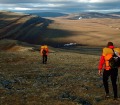Barefoot shoes, also known as minimalist shoes, have gained popularity in recent years. They promise a natural running experience and a return to the original way our ancestors moved. But how exactly did these shoes come about? To understand the significance of barefoot shoes today, let’s take a look back at their history.
The Origins of Barefoot Running
Barefoot Running in Antiquity
Humans have been running barefoot for thousands of years. In antiquity, it was common for hunters and gatherers to move without shoes. In many early civilizations, such as in Egypt or Greece, people either went barefoot or wore simple sandals. These early people were aware of the benefits of barefoot running—better ground feel, more natural movement, and less strain on the joints.
Barefoot Running in Various Cultures
Barefoot running also plays a significant role in the history of different cultures. In many African, South American, and Asian communities, people still run barefoot today. In these cultures, barefoot running often symbolizes a close connection to nature and spirituality.
The Rediscovery of Barefoot Running
The Renaissance of Barefoot Running in the 20th Century
In the 20th century, a movement began that brought barefoot running back into the spotlight. Especially in the 1960s, barefoot running became popular as part of the hippie culture. However, it took several more decades before scientists began systematically studying the benefits of barefoot running.
The Influence of Science on Barefoot Running
In the late 1990s, studies on the biomechanics of running led to new insights into the advantages of barefoot running. Researchers found that wearing conventional running shoes leads to an unnatural running technique that can be harmful in the long run. This led to a growing movement towards more natural running styles and ultimately to the development of barefoot shoes.
The Birth of Modern Barefoot Shoes
The First Barefoot Shoe Models
The first modern barefoot shoes were launched in the early 2000s. They were minimalist in design and offered only a thin sole to protect the feet from injury. These first models were particularly popular among runners who were looking for an alternative to traditional running shoes.
Technological Innovations in the Shoe Industry
With the increasing demand for barefoot shoes, the shoe industry began to develop innovative materials and designs. New technologies made it possible to produce even thinner and more flexible soles that support the natural movement of the foot.
Barefoot Shoes in the Mainstream
The Rise of Minimalist Shoes in the 2000s
In the 2000s, barefoot shoes reached the mainstream. Athletes like marathon runners and triathletes began to discover the benefits of barefoot running and made barefoot shoes popular. Brands like Vibram FiveFingers led the trend and became symbols of the movement.
The Role of Athletes and Celebrities
The support of prominent athletes and influencers significantly contributed to the spread of barefoot shoes. They shared their positive experiences and helped overcome skepticism about this new type of footwear.
The Science Behind Barefoot Shoes
How Barefoot Shoes Promote Foot Health Barefoot shoes promote natural foot movement and strengthen foot muscles. Studies have shown that wearing barefoot shoes can correct foot posture and reduce the risk of injury. The increased contact with the ground enhances foot sensitivity, leading to better balance and posture.
Studies and Research Findings
Numerous studies have confirmed the positive effects of barefoot shoes. Researchers found that barefoot runners develop a more efficient running technique and use less energy than runners with conventional shoes. Additionally, there was less strain on the joints, reducing the risk of long-term damage.
The Evolution of Barefoot Shoes
Advances in Design and Materials
Over the years, barefoot shoes have undergone a remarkable evolution. Today’s models are not only functional but also stylish. Advances in material research have made it possible to produce even more breathable, lighter, and durable shoes. From minimalist designs to models for specific sports—the variety of barefoot shoes has greatly increased.
The Influence of Consumer Feedback
User feedback played a crucial role in the further development of barefoot shoes. Manufacturers responded to consumer demands by improving fit, comfort, and durability. This led to broad acceptance and continuous improvement of the products.
Barefoot Shoes for Different Areas of Life Barefoot Shoes in Sports Barefoot shoes are no longer just interesting for runners. Today, they are used in many sports, including CrossFit, hiking, yoga, and even climbing. The advantages they offer—better ground control, stronger foot muscles, and reduced risk of injury—make them a popular choice among athletes.
Barefoot Shoes in Everyday Life Barefoot shoes are also gaining more followers in everyday life. Whether at work, walking, or leisure—barefoot shoes offer comfort and promote healthy foot posture. Many people report an improvement in their overall well-being and a reduction in foot and back pain.
Controversy Surrounding Barefoot Shoes
Critics and Concerns
As with any innovation, there are critics. Some experts warn that a sudden switch to barefoot shoes can lead to overuse injuries if the body is not sufficiently accustomed to the new strain. The question of whether barefoot shoes are suitable for everyone is also a topic of ongoing debate.
How the Industry Has Responded The shoe industry has responded to these concerns by developing models that allow for a gradual transition. Additionally, there is an increased focus on education and guidance to ensure that users make the switch to barefoot shoes correctly and without risk.
The Future of Barefoot Shoes Trends and Innovations The future of barefoot shoes looks promising. New technologies like 3D printing and sustainable materials will revolutionize the production and design of barefoot shoes. Personalization of shoes through custom fits and individual designs could soon become the norm.
How Will the Market Develop? The market for barefoot shoes will continue to grow as more people recognize the benefits. The combination of scientific findings, consumer feedback, and technological innovations will ensure that barefoot shoes become even more versatile and accessible.
Conclusion
Barefoot shoes have come a long way—from the beginnings of barefoot running in antiquity to the modern shoe industry. They have not only changed the way we think about shoes but also how we move. Their growing popularity shows that they are more than just a trend—they are a return to a more natural, healthier lifestyle.













